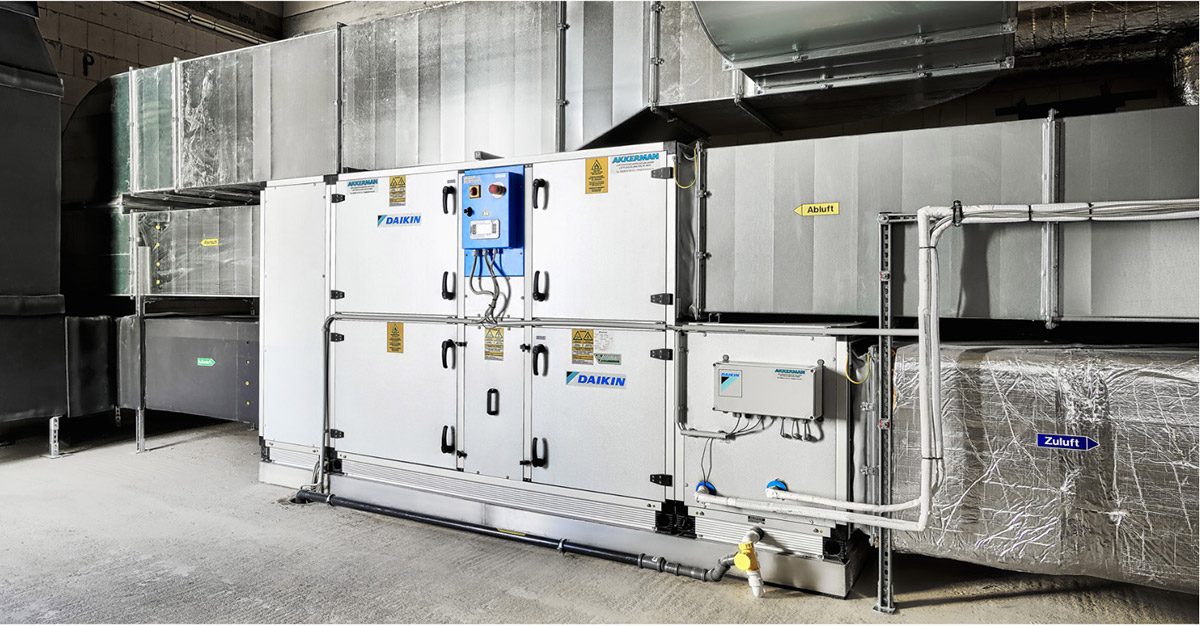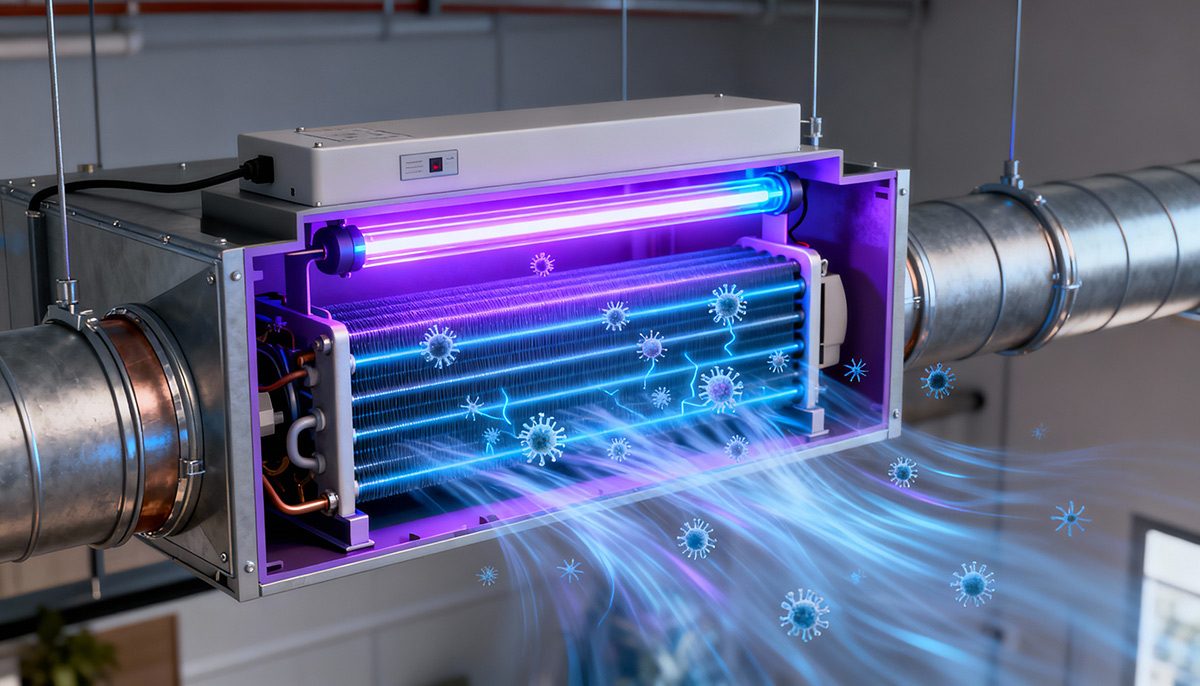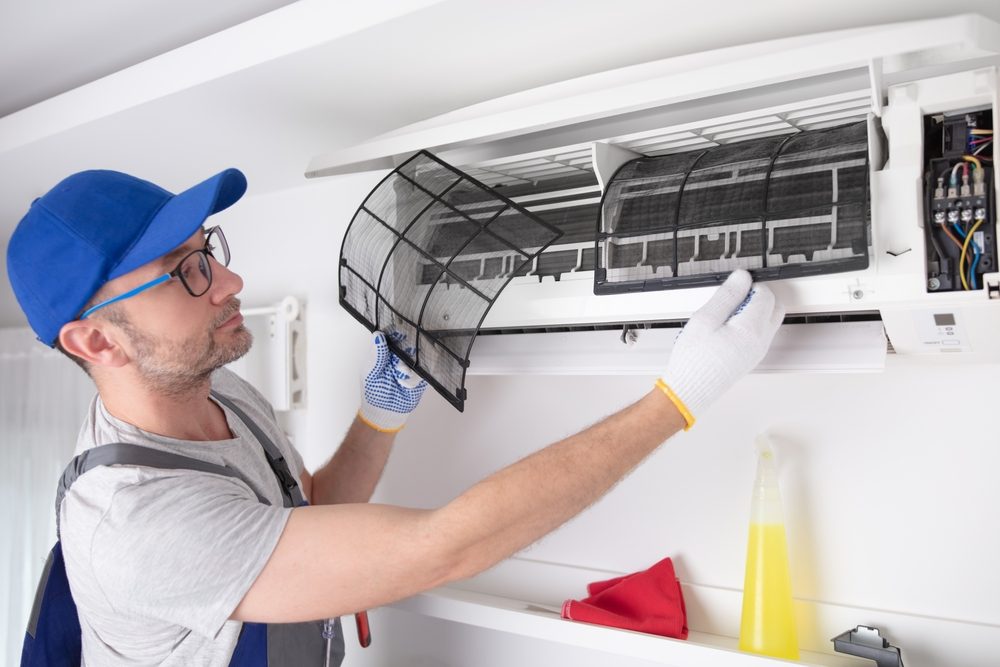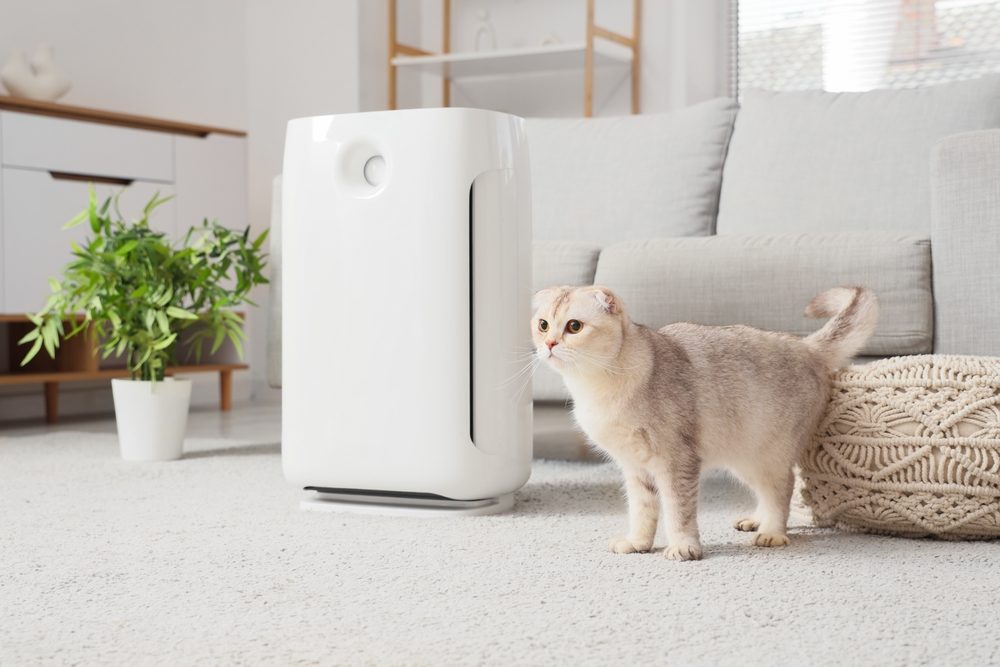
Maintaining optimal indoor air quality is essential for comfort and health. The fresh air handling unit (FAHU) is an effective means of achieving this goal. In this article, we’ll look at the role FAHUs play in HVAC systems, highlighting how they contribute to a healthier and more comfortable indoor environment.
We will explore the role of FAHUs in ensuring superior indoor air quality, describe the key components of an FAHU, and examine the differences between FAHUs and traditional air handling units (AHUs). We’ll also cover best practices for installing and maintaining FAHUs, offering practical advice to maximise their effectiveness and longevity.
Choosing the right FAHU for your system is critical, and this article provides you with essential information, ensuring you make an informed decision that aligns with your needs. So, let’s get started.
How FAHU works in an HVAC System?
FAHUs play a critical role in enhancing indoor air quality by managing the flow of fresh, outdoor air into a building. How do they work? It starts with the FAHU drawing in air from outside the building. This air is subjected to a rigorous filtration process designed to capture and remove contaminants such as dust, pollen and other particulate matter.
Once filtered, the air moves through a heat exchanger within the FAHU. This adjusts the air temperature to match the building’s climate control requirements. Depending on the season or the specific needs of the indoor environment, the air may be heated or cooled. This conditioning process ensures that the air reaching the interior spaces maintains a comfortable and consistent temperature.
Finally, the purified air (now at the desired temperature) is distributed throughout the building via a system of ducts. These ducts are designed to efficiently deliver the conditioned air to various rooms and areas within the building. By integrating fresh, filtered air into the HVAC system, the FAHU improves air quality and contributes to the overall comfort and energy efficiency of the building.
Key components of an FAHU
Let’s now look at the key components of a FAHU:
Fan: The fan is a pivotal component in an FAHU and is responsible for driving air circulation. It draws in fresh outdoor air to initiate the ventilation process. The fan's effectiveness directly influences the airflow rate, which in turn impacts the overall efficiency and performance of the unit.
- Heating and cooling coils: Temperature management is crucial for maintaining a comfortable indoor environment, and this is achieved through the heating and cooling coils within the FAHU. These coils are strategically placed to regulate the temperature of the incoming air. Heating coils are used to warm the air during colder periods while cooling coils are employed to lower the temperature.
Filters: Filters play a vital role in ensuring the air circulated within the building is clean. The filters in an FAHU are designed to capture and remove airborne contaminants such as dust, pollen and other pollutants. This not only enhances the indoor air quality but also protects the unit's internal components and extends its operational lifespan.
Differences between FAHUs and AHUs
A FAHU is a specialised type of AHU focused exclusively on introducing and conditioning fresh outdoor air. This system is essential in environments where high levels of fresh air are crucial, such as hospitals, laboratories and various commercial or residential spaces where indoor air quality is a priority.
Unlike standard AHUs (which are capable of both recirculating internal air and bringing in fresh air), an FAHU operates solely by drawing in outside air. This air is then filtered to remove impurities before undergoing conditioning processes (heating or cooling) to meet the building’s requirements. Advanced FAHUs may also feature energy-saving technologies such as heat recovery wheels and dehumidification systems and methods to regulate relative humidity through heat pipes.
So, the main distinction between a traditional AHU and a FAHU is their air handling capabilities. While AHUs manage a combination of recirculated indoor air and incoming fresh air, FAHUs are dedicated exclusively to treating and distributing fresh outdoor air.
Benefits of using FAHU in HVAC systems
Let’s look at some of the key benefits of using FAHU in HVAC systems:
Improved air quality: FAHUs significantly enhance indoor air quality by delivering fresh, filtered and conditioned air into the building. This ensures a healthier and more pleasant indoor environment.
Energy efficiency: These units can be integrated with energy recovery technologies, such as Heat Recovery Ventilators (HRVs), to optimise energy use and reduce operational costs.
Versatility and customisation: FAHUs come in various sizes and capacities, making them adaptable to different needs and applications, whether for large commercial spaces or smaller residential settings.
Simplified installation and maintenance: Their modular design allows for straightforward installation and ease of maintenance, ensuring they can be efficiently managed and serviced over their lifespan. We will look at installation and maintenance in more detail later in this article.
Key considerations when choosing an FAH
When considering an FAHU, it’s essential to consider both the function you require and the setting where you may need that function. FAHUs are employed across diverse settings to maintain a steady flow of fresh, clean air. Typical settings include:
Commercial spaces: Offices, shopping centres and hotels where maintaining high air quality is essential for comfort and well-being.
Industrial environments: Ensuring a clean air supply in manufacturing and processing areas to support operational efficiency and safety.
Healthcare settings: Delivering hygienic and sterile air conditions in hospitals and clinics to protect patient health and support medical procedures.
Educational facilities: Enhancing air quality in schools and universities to foster a healthy learning atmosphere.on
Installation and maintenance best practices
When it comes to installation, consider the following:
Site assessment: Conduct a thorough site evaluation to check for adequate space, optimal locations for air intake and exhaust, and accessibility for electrical connections. Adhere to local building codes and regulations to ensure the installation is safe, efficient and compliant with legal standards.
Use professionals: Go for certified installers to ensure the FAHU is integrated correctly into your HVAC system and all components are installed according to manufacturer guidelines. Have licensed electricians handle electrical connections, ensuring the power supply meets the FAHU’s requirements and consider surge protection for added safety.
Ventilation: Ensure sufficient clearance around the FAHU for easy maintenance, including room for air intake, exhaust and access for service. In addition, use appropriately sized and arranged ducts to meet the FAHU’s airflow needs, reducing air resistance and enhancing performance.
Calibrate: After installation, thoroughly test and calibrate the unit to confirm it meets performance standards for temperature control, filtration and airflow.
Now let’s look at some maintenance tips:
Regular inspections: Regularly check fans, heating and cooling coils, and other key parts for wear or debris, and clean as needed to ensure efficient operation. Inspect belts and drives for wear and proper tension, replacing damaged ones to prevent performance issues and avoid unexpected failures. Replace filters frequently to maintain optimal air quality and follow the manufacturer’s schedule for changes. Ensure you also schedule professional maintenance.
Cleaning and lubrication: Periodically clean the ducts connected to the FAHU to remove dust, mould, and other contaminants, improving efficiency and preventing buildup. Keep fan bearings and other moving components well-lubricated according to the manufacturer’s recommendations to reduce friction and extend lifespan.
Calibrate controls: Regularly calibrate control systems to ensure accurate humidity and temperature regulation, and adjust sensors and actuators as needed..
Reduction of mold and mildew: High humidity levels create an ideal breeding ground for mold and mildew, which can lead to health problems and damage to property. Air purifiers equipped with HEPA filters are particularly effective at capturing mold spores from the air, helping to reduce their concentration and mitigate their impact on indoor air quality.
Manage dust mites: Dust mites are a common allergen, and their numbers can increase with higher humidity levels. By trapping dust mites and their waste products, air purifiers can alleviate allergy symptoms and contribute to a healthier living space. This is especially beneficial for individuals with asthma or respiratory conditions, as reducing airborne allergens can lead to fewer triggers and improved breathing comfort.
Removing odors and VOCs: In humid conditions, air purifiers with activated carbon filters can be effective at eliminating odors and VOCs that may be more pronounced in damp environments. For example, musty odors associated with high humidity can be neutralized, contributing to a more pleasant indoor atmosphere. Some advanced models also come with dehumidifying features, which can directly address excessive moisture in the air, further enhancing air quality and comfort.
About Daikin
Daikin is a world leader in HVAC systems, offering a wide range of solutions tailored to meet diverse building requirements – including residential, commercial, and industrial. Daikin offers a choice of split systems, packaged units, ductless mini-split systems, VRF (VRV) systems, and more – each designed to deliver exceptional performance, energy efficiency, and comfort.
With innovative, pioneering technology and exceptional service, Daikin has sold millions of systems in 140 countries. If you would like to find out more about Daikin’s products, contact us today.



